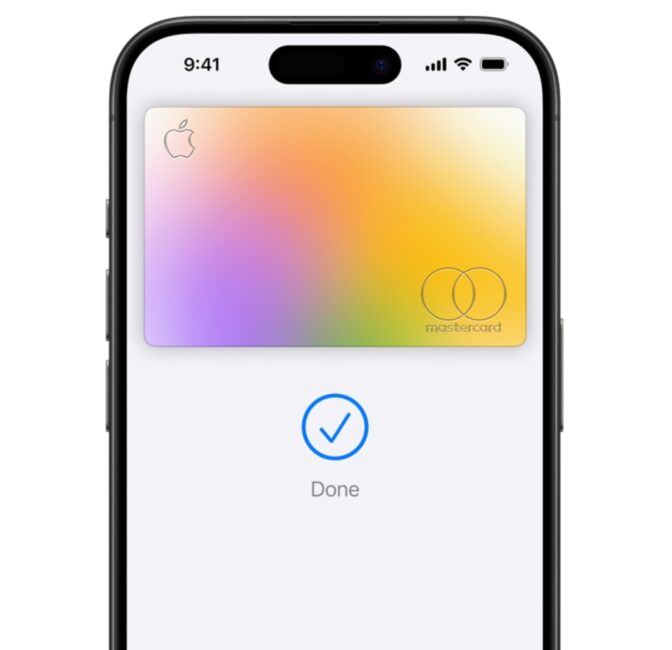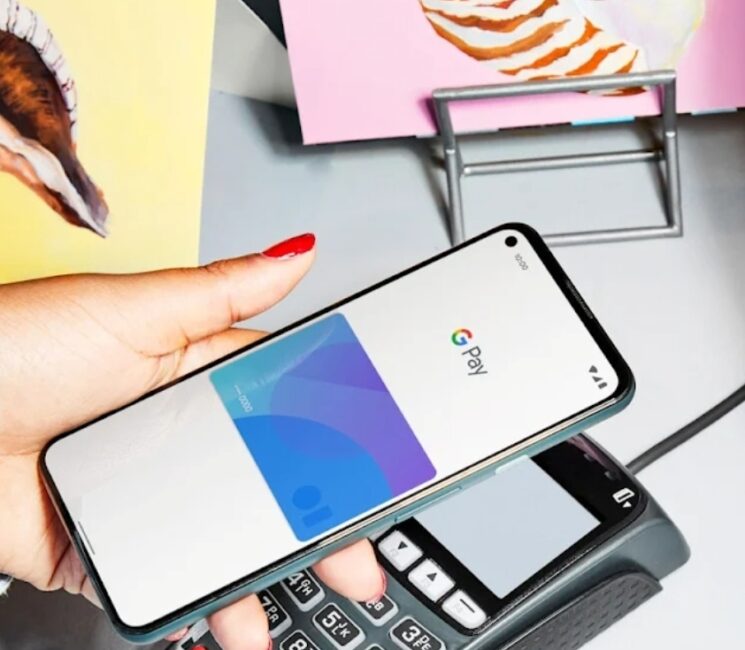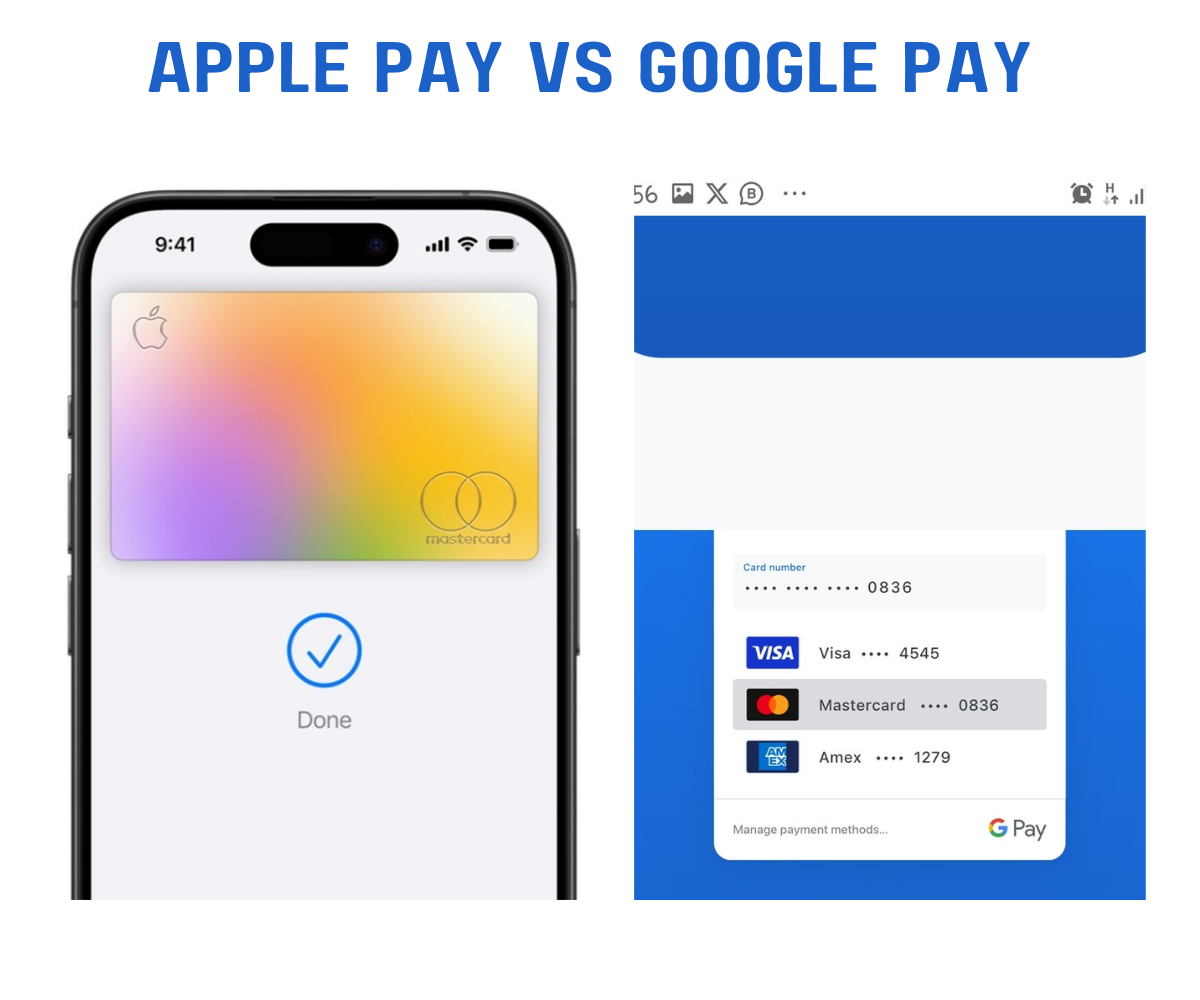This article will enlighten you on Apple pay vs Google Pay, how they work, their similarities and differences in services.
Interestingly, Apple and Google are basically the largest used tech platform and products that spans across several countries conveniently.
This is why this article is very delicate, with this advancement in services and expansion in products by the two tech giants, comes Apple pay vs Google Pay.
While, we admit that this mobile payment systems, are practically similar in what problems they are designed to solve.
About Apple Pay and Google Pay
Google pay and Apple pay have spectacular differences in how they achieve this goal.
Google Pay was formerly known as Google wallet, until 2022 when the name was changed to Google Pay.
It was first Introduced as Google Wallet in 2011, and uses a Contactless technology payment via NFC. Google pay supports online purchases – from an app or website, with PIN.
Its device limitations allows to only be used on Android and iOS devices. It provides assured security – Touch ID; tokenization while PIN; uses Google Pay virtual card.
While Apple Pay on the other hand, also known as Apple Cash, created about a decade ago, precisely September 2014.
Offers Contactless payment via near-field communication (NFC) technology. Provides Online Purchase via its app or website, with Touch ID or Face ID.
The Apple pay device limitations include-ability to be used only on Apple mobile devices and for security – it uses Touch ID; tokenization.
This service is quite easy to use, great for families with teenagers who are interested in using a mobile payment app, it is more easily monitored and flexible.
Apple may be easier to use, but Google has more features, including Google Pay, its mobile payment app.
Apple Pay vs Google Pay Similarities

Apple Pay vs Google pay? Both, are indeed widely acceptable forms of mobile payment systems
Both include a digital wallet, and are similar in what they can do.
Apple Pay is found to be easier for teenagers to figure out and use for peer-to-peer (P2P) and retail transactions, with parental monitoring.
Both payment systems allow for contactless payment using near-field communication (NFC) technology, though with slightly different implementations algorithms.
Both can make online purchases directly from an app or website, automatically and swiftly handling the entire process with pre-filled defaults that will only require a PIN or Touch ID verification to complete the transaction.
Apple Pay vs Google Pay Differences
Although their interfaces and user options are similar, to fully term Apple pay vs Google pay simply means discussing their differences is key, primarily in terms of security. Below are some of them:

Google acts as an intermediary and stores your card details on its servers in case of any futuristic need while Apple explicitly operates a hands-off, never-track-your-transaction approach.
Apple Pay is available on iPhone models with Face ID and Touch ID (except the 5s), as well as on iPad models with Touch ID or Face ID, and on Apple Watch Series 1 and later.
Google rather incorporates a more traditional PIN-based authentication system which allows it to work on older hardware than Apple Pay does.
Nevertheless, Google play is a secure, private digital wallet that lets you store items such as: Payment cards, Flight tickets, Passes and digital keys, Gift cards and more.
Apple Pay further provides an Apple Cash Family feature, which works by giving an adult access to add family members younger than 18 under their own Apple Wallet.
As well as add money to their account, lock access to the account, and choose to whom they can send money, and set up notifications whenever the young person makes a transaction for needs such as pay for movies, grocery shopping or clothings, fast-foods etc.
Google Pay, in contrast, is an app within the wallet that lets you manage your money and finances.
It has a component within it system that allow kids of any age to be added by a parent to the parent’s own Google account, which gives the adult control to limit children’s spending to certain apps or types of purchases, and of course, requires parental preauthorization for any purchase they child makes.
With Google kids under age 13 can’t make purchases using Google Assistant.
Google Pay also offers another feature for family use, called Google’s Family Link app, where parents can monitor kids’ purchases in the Google Play store, their child’s location, and time spent on supervised devices.
Since, Google Pay only works on Google Play, kids can’t use it to make purchases in physical stores or to send money to their friends or family.
Security in both Systems
Note: Credit card fraud is still an active and significant problem worldwide. Apple Pay and Google Wallet work round the clock to provide equally robust and efficient security to their consumers. Yet, it’s very important that consumers stay careful and keep their accounts details confidential.
Conclusion
Apple Pay had once been promoted as “Your wallet. Without the wallet,” a description that, in reality, fits Google Wallet better.
On the other hand, Google Pay, was promoted as “an easier way to pay,” which in all truth fits Apple more conveniently.
Apple pay vs Google pay? From all points analyzed above, consumers should know, both payment systems are dedicated, smooth, efficient, secured and convenient for online transactions, and it is mostly a matter of personal choice.



